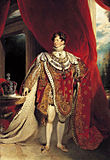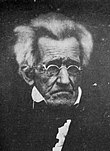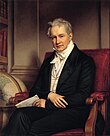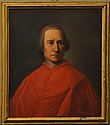1828 (MDCCCXXVIII) was a leap year starting on Tuesday of the Gregorian calendar and a leap year starting on Sunday of the Julian calendar, the 1828th year of the Common Era (CE) and Anno Domini (AD) designations, the 828th year of the 2nd millennium, the 28th year of the 19th century, and the 9th year of the 1820s decade. As of the start of 1828, the Gregorian calendar was 12 days ahead of the Julian calendar, which remained in localized use until 1923.

1809 (MDCCCIX) was a common year starting on Sunday of the Gregorian calendar and a common year starting on Friday of the Julian calendar, the 1809th year of the Common Era (CE) and Anno Domini (AD) designations, the 809th year of the 2nd millennium, the 9th year of the 19th century, and the 10th and last year of the 1800s decade. As of the start of 1809, the Gregorian calendar was 12 days ahead of the Julian calendar, which remained in localized use until 1923.

1764 (MDCCLXIV) was a leap year starting on Sunday of the Gregorian calendar and a leap year starting on Thursday of the Julian calendar, the 1764th year of the Common Era (CE) and Anno Domini (AD) designations, the 764th year of the 2nd millennium, the 64th year of the 18th century, and the 5th year of the 1760s decade. As of the start of 1764, the Gregorian calendar was 11 days ahead of the Julian calendar, which remained in localized use until 1923.
The 1730s decade ran from January 1, 1730, to December 31, 1739.

The 1740s decade ran from January 1, 1740, to December 31, 1749. Many events during this decade sparked an impetus for the Age of Reason. Military and technological advances brought one of the first instances of a truly global war to take place here, when Maria Theresa of Austria’s struggle to succeed the various crowns of her father King Charles VI led to a war involving nearly all European states in the War of the Austrian Succession, eventually spilling over to North America with the War of Jenkins’ Ear. Capitalism grew robust following the fallout of the South Sea bubble two decades and the subsequent reign of Sir Robert Walpole, whose rule ended in the earlier half of this decade.
1854 (MDCCCLIV) was a common year starting on Sunday of the Gregorian calendar and a common year starting on Friday of the Julian calendar, the 1854th year of the Common Era (CE) and Anno Domini (AD) designations, the 854th year of the 2nd millennium, the 54th year of the 19th century, and the 5th year of the 1850s decade. As of the start of 1854, the Gregorian calendar was 12 days ahead of the Julian calendar, which remained in localized use until 1923.
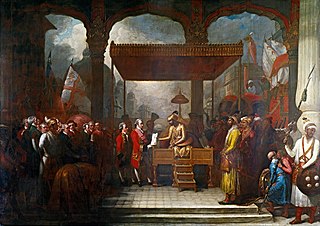
1765 (MDCCLXV) was a common year starting on Tuesday of the Gregorian calendar and a common year starting on Saturday of the Julian calendar, the 1765th year of the Common Era (CE) and Anno Domini (AD) designations, the 765th year of the 2nd millennium, the 65th year of the 18th century, and the 6th year of the 1760s decade. As of the start of 1765, the Gregorian calendar was 11 days ahead of the Julian calendar, which remained in localized use until 1923.

1757 (MDCCLVII) was a common year starting on Saturday of the Gregorian calendar and a common year starting on Wednesday of the Julian calendar, the 1757th year of the Common Era (CE) and Anno Domini (AD) designations, the 757th year of the 2nd millennium, the 57th year of the 18th century, and the 8th year of the 1750s decade. As of the start of 1757, the Gregorian calendar was 11 days ahead of the Julian calendar, which remained in localized use until 1923.
1762 (MDCCLXII) was a common year starting on Friday of the Gregorian calendar and a common year starting on Tuesday of the Julian calendar, the 1762nd year of the Common Era (CE) and Anno Domini (AD) designations, the 762nd year of the 2nd millennium, the 62nd year of the 18th century, and the 3rd year of the 1760s decade. As of the start of 1762, the Gregorian calendar was 11 days ahead of the Julian calendar, which remained in localized use until 1923.
The 1710s decade ran from January 1, 1710, to December 31, 1719.
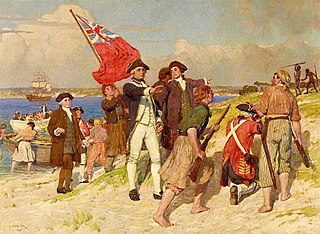
1770 (MDCCLXX) was a common year starting on Monday of the Gregorian calendar and a common year starting on Friday of the Julian calendar, the 1770th year of the Common Era (CE) and Anno Domini (AD) designations, the 770th year of the 2nd millennium, the 70th year of the 18th century, and the 1st year of the 1770s decade. As of the start of 1770, the Gregorian calendar was 11 days ahead of the Julian calendar, which remained in localized use until 1923.

1758 (MDCCLVIII) was a common year starting on Sunday of the Gregorian calendar and a common year starting on Thursday of the Julian calendar, the 1758th year of the Common Era (CE) and Anno Domini (AD) designations, the 758th year of the 2nd millennium, the 58th year of the 18th century, and the 9th year of the 1750s decade. As of the start of 1758, the Gregorian calendar was 11 days ahead of the Julian calendar, which remained in localized use until 1923.

1795 (MDCCXCV) was a common year starting on Thursday of the Gregorian calendar and a common year starting on Monday of the Julian calendar, the 1795th year of the Common Era (CE) and Anno Domini (AD) designations, the 795th year of the 2nd millennium, the 95th year of the 18th century, and the 6th year of the 1790s decade. As of the start of 1795, the Gregorian calendar was 11 days ahead of the Julian calendar, which remained in localized use until 1923.

1775 (MDCCLXXV) was a common year starting on Sunday of the Gregorian calendar and a common year starting on Thursday of the Julian calendar, the 1775th year of the Common Era (CE) and Anno Domini (AD) designations, the 775th year of the 2nd millennium, the 75th year of the 18th century, and the 6th year of the 1770s decade. As of the start of 1775, the Gregorian calendar was 11 days ahead of the Julian calendar, which remained in localized use until 1923.

1768 (MDCCLXVIII) was a leap year starting on Friday of the Gregorian calendar and a leap year starting on Tuesday of the Julian calendar, the 1768th year of the Common Era (CE) and Anno Domini (AD) designations, the 768th year of the 2nd millennium, the 68th year of the 18th century, and the 9th year of the 1760s decade. As of the start of 1768, the Gregorian calendar was 11 days ahead of the Julian calendar, which remained in localized use until 1923.

1763 (MDCCLXIII) was a common year starting on Saturday of the Gregorian calendar and a common year starting on Wednesday of the Julian calendar, the 1763rd year of the Common Era (CE) and Anno Domini (AD) designations, the 763rd year of the 2nd millennium, the 63rd year of the 18th century, and the 4th year of the 1760s decade. As of the start of 1763, the Gregorian calendar was 11 days ahead of the Julian calendar, which remained in localized use until 1923.

1760 (MDCCLX) was a leap year starting on Tuesday of the Gregorian calendar and a leap year starting on Saturday of the Julian calendar, the 1760th year of the Common Era (CE) and Anno Domini (AD) designations, the 760th year of the 2nd millennium, the 60th year of the 18th century, and the 1st year of the 1760s decade. As of the start of 1760, the Gregorian calendar was 11 days ahead of the Julian calendar, which remained in localized use until 1923.

1759 (MDCCLIX) was a common year starting on Monday of the Gregorian calendar and a common year starting on Friday of the Julian calendar, the 1759th year of the Common Era (CE) and Anno Domini (AD) designations, the 759th year of the 2nd millennium, the 59th year of the 18th century, and the 10th and last year of the 1750s decade. As of the start of 1759, the Gregorian calendar was 11 days ahead of the Julian calendar, which remained in localized use until 1923.

1744 (MDCCXLIV) was a leap year starting on Wednesday of the Gregorian calendar and a leap year starting on Sunday of the Julian calendar, the 1744th year of the Common Era (CE) and Anno Domini (AD) designations, the 744th year of the 2nd millennium, the 44th year of the 18th century, and the 5th year of the 1740s decade. As of the start of 1744, the Gregorian calendar was 11 days ahead of the Julian calendar, which remained in localized use until 1923.

1706 (MDCCVI) was a common year starting on Friday of the Gregorian calendar and a common year starting on Tuesday of the Julian calendar, the 1706th year of the Common Era (CE) and Anno Domini (AD) designations, the 706th year of the 2nd millennium, the 6th year of the 18th century, and the 7th year of the 1700s decade. As of the start of 1706, the Gregorian calendar was 11 days ahead of the Julian calendar, which remained in localized use until 1923.









